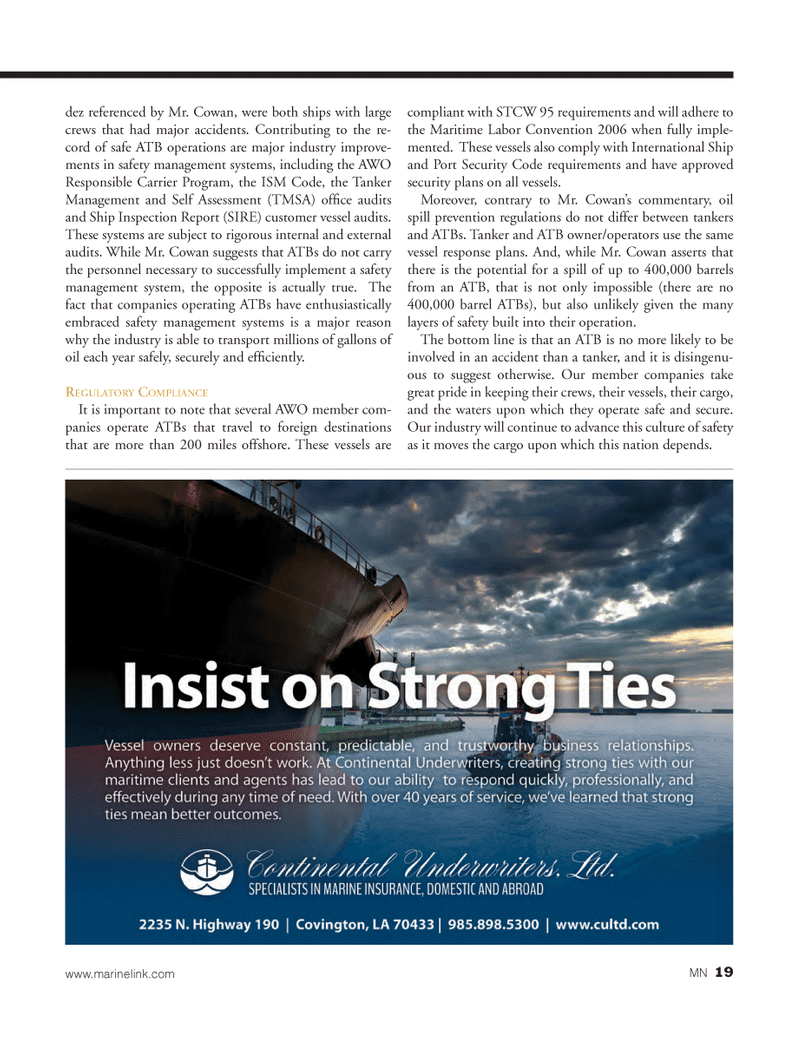
Page 19: of Marine News Magazine (April 2013)
Offshore Service Operators
Read this page in Pdf, Flash or Html5 edition of April 2013 Marine News Magazine
dez referenced by Mr. Cowan, were both ships with large crews that had major accidents. Contributing to the re- cord of safe ATB operations are major industry improve- ments in safety management systems, including the AWO Responsible Carrier Program, the ISM Code, the Tanker Management and Self Assessment (TMSA) ofÞ ce audits and Ship Inspection Report (SIRE) customer vessel audits. These systems are subject to rigorous internal and external audits. While Mr. Cowan suggests that ATBs do not carry the personnel necessary to successfully implement a safety management system, the opposite is actually true. The fact that companies operating ATBs have enthusiastically embraced safety management systems is a major reason why the industry is able to transport millions of gallons of oil each year safely, securely and efÞ ciently. REGULATORY COMPLIANCEIt is important to note that several AWO member com- panies operate ATBs that travel to foreign destinations that are more than 200 miles offshore. These vessels are compliant with STCW 95 requirements and will adhere to the Maritime Labor Convention 2006 when fully imple- mented. These vessels also comply with International Ship and Port Security Code requirements and have approved security plans on all vessels. Moreover, contrary to Mr. CowanÕs commentary, oil spill prevention regulations do not differ between tankers and ATBs. Tanker and ATB owner/operators use the same vessel response plans. And, while Mr. Cowan asserts that there is the potential for a spill of up to 400,000 barrels from an ATB, that is not only impossible (there are no 400,000 barrel ATBs), but also unlikely given the many layers of safety built into their operation. The bottom line is that an ATB is no more likely to be involved in an accident than a tanker, and it is disingenu- ous to suggest otherwise. Our member companies take great pride in keeping their crews, their vessels, their cargo, and the waters upon which they operate safe and secure. Our industry will continue to advance this culture of safety as it moves the cargo upon which this nation depends. MN 19www.marinelink.com MN April2013 Layout 18-31.indd 19MN April2013 Layout 18-31.indd 194/1/2013 11:29:21 AM4/1/2013 11:29:21 AM

 18
18

 20
20
